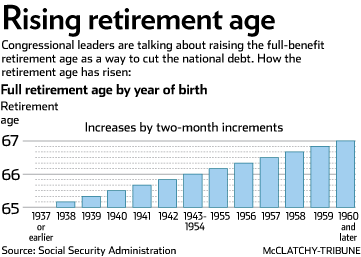
Financial planners who successfully pass the CFP exam are awarded the CFP certification. The exam is given three times a calendar year: in March and July, as well as November. It contains 170 multiple-choice questions. It is administered over two, three-hour sessions. More than 250 test centers offer it.
A cfp
CFP designation is a great option for anyone who wants to work in investment and financial planning. This certification is beneficial to many professions such as financial advisors and accountants. This designation does not require you to be a financial advisor.
To obtain a CFP, you must first pass an exam that tests your industry knowledge and allows you to see how it can be applied to real-world situations. The exam contains 170-question multiple choices questions. It's usually split into two 3-hour sessions. Examinees must take the time to learn the material and then apply it in a real-world setting.

Structure of fee-and-commission
The fee-and-commission structure is essential for anyone considering becoming a CFP. The CFP Board requires CFP professionals to clearly disclose their compensation as commissions or fees. Fee-and-commission structures are not the only consideration. CFP standards also stipulate that compensation labels must accurately reflect the entire relationship between the client and advisor.
CFP professionals can have a relationship in which they receive Sales-Related Compensation. Goldfarb's example shows that a member his family owned a company that paid him commissions. He was not related to the company, but he did not refer clients to Goldfarb.
Training requirements
CFP Board requirements that CFP candidates must have at least three years' experience in a related field. They also need two years of apprenticeship experience. Each apprenticeship role has further individualized requirements. Candidates must follow the CFP Board standards of professional behavior, including disclosing any criminal records. The CFP Board also performs extensive background checks on all candidates.
The CFP test is a highly professional examination. It is divided in two sections and given over two, three-hour sessions. It is typically proctored and supervised by local university staff. It takes approximately 10 hours to complete, and it costs $925. The CFP exam covers all areas of financial planning. Questions include professional conduct, retirement planning, tax planning, estate planning and other related topics.

Exam content
CFP(r), also known as the Certified Financial Planner (CFP), marks the first step towards becoming Certified Financial Planner. The exam has three sections with each section consisting of two subsections. The first subsection asks questions about the regulatory framework for financial planning. The second subsection deals with the financial planning process. Questions pertaining to tax and retirement planning are the most difficult areas to pass for students. CFP(r). Candidates must answer at least five questions correctly to determine whether they pass or fail. You should therefore thoroughly read the material.
There are 170 multiple choice questions. Many of the exam questions are based on cases. These case studies present a hypothetical scenario with a client and their financial situation. These cases may cover issues such as divorce and child spending, business assets or insurance coverage.
FAQ
Is it worth having a wealth manger?
A wealth management service can help you make better investments decisions. It should also advise what types of investments are best for you. This way, you'll have all the information you need to make an informed decision.
But there are many things you should consider before using a wealth manager. For example, do you trust the person or company offering you the service? Is it possible for them to quickly react to problems? Are they able to explain in plain English what they are doing?
What are the Benefits of a Financial Advisor?
A financial plan gives you a clear path to follow. You won't be left guessing as to what's going to happen next.
It will give you peace of heart knowing you have a plan that can be used in the event of an unexpected circumstance.
Financial planning will help you to manage your debt better. You will be able to understand your debts and determine how much you can afford.
Your financial plan will help you protect your assets.
What is a financial planner? And how can they help you manage your wealth?
A financial planner can help you make a financial plan. They can evaluate your current financial situation, identify weak areas, and suggest ways to improve.
Financial planners are highly qualified professionals who can help create a sound plan for your finances. They can give advice on how much you should save each monthly, which investments will provide you with the highest returns and whether it is worth borrowing against your home equity.
A fee is usually charged for financial planners based on the advice they give. Certain criteria may be met to receive free services from planners.
Statistics
- US resident who opens a new IBKR Pro individual or joint account receives a 0.25% rate reduction on margin loans. (nerdwallet.com)
- A recent survey of financial advisors finds the median advisory fee (up to $1 million AUM) is just around 1%.1 (investopedia.com)
- According to a 2017 study, the average rate of return for real estate over a roughly 150-year period was around eight percent. (fortunebuilders.com)
- If you are working with a private firm owned by an advisor, any advisory fees (generally around 1%) would go to the advisor. (nerdwallet.com)
External Links
How To
How to Invest your Savings to Make Money
You can make a profit by investing your savings in various investments, including stock market, mutual funds bonds, bonds and real estate. This is what we call investing. It is important to realize that investing does no guarantee a profit. But it does increase the chance of making profits. There are various ways to invest your savings. One of these options is buying stocks, Mutual Funds, Gold, Commodities, Real Estate, Bonds, Stocks, ETFs, Gold, Commodities, Real Estate, Bonds, Stocks, Real Estate, Bonds, and ETFs. These are the methods we will be discussing below.
Stock Market
The stock market is one of the most popular ways to invest your savings because it allows you to buy shares of companies whose products and services you would otherwise purchase. Buying stocks also offers diversification which helps protect against financial loss. If oil prices drop dramatically, for example, you can either sell your shares or buy shares in another company.
Mutual Fund
A mutual funds is a fund that combines money from several individuals or institutions and invests in securities. They are professionally managed pools with equity, debt or hybrid securities. The investment objectives of mutual funds are usually set by their board of Directors.
Gold
The long-term value of gold has been demonstrated to be stable and it is often considered an economic safety net during times of uncertainty. Some countries use it as their currency. Gold prices have seen a significant rise in recent years due to investor demand for inflation protection. The supply and demand factors determine how much gold is worth.
Real Estate
Real estate refers to land and buildings. Real estate is land and buildings that you own. To generate additional income, you may rent out a part of your house. You may use the home as collateral for loans. The home may be used as collateral to get loans. But before you buy any type real estate, consider these factors: location, condition, age, condition, etc.
Commodity
Commodities are raw materials, such as metals, grain, and agricultural goods. As these items increase in value, so make commodity-related investments. Investors who want the opportunity to profit from this trend should learn how to analyze charts, graphs, identify trends, determine the best entry points for their portfolios, and to interpret charts and graphs.
Bonds
BONDS ARE LOANS between companies and governments. A bond is a loan where both parties agree to repay the principal at a certain date in exchange for interest payments. As interest rates fall, bond prices increase and vice versa. An investor buys a bond to earn interest while waiting for the borrower to pay back the principal.
Stocks
STOCKS INVOLVE SHARES in a corporation. A share represents a fractional ownership of a business. Shareholders are those who own 100 shares of XYZ Corp. When the company earns profit, you also get dividends. Dividends are cash distributions to shareholders.
ETFs
An Exchange Traded Fund (ETF) is a security that tracks an index of stocks, bonds, currencies, commodities, or other asset classes. ETFs trade in the same way as stocks on public exchanges as traditional mutual funds. The iShares Core S&P 500 Exchange Tradeable Fund (NYSEARCA : SPY) tracks the performance of Standard & Poor’s 500 Index. Your portfolio will automatically reflect the performance S&P 500 if SPY shares are purchased.
Venture Capital
Venture capital is private financing venture capitalists provide entrepreneurs to help them start new businesses. Venture capitalists finance startups with low to no revenue and high risks of failure. Venture capitalists usually invest in early-stage companies such as those just beginning to get off the ground.